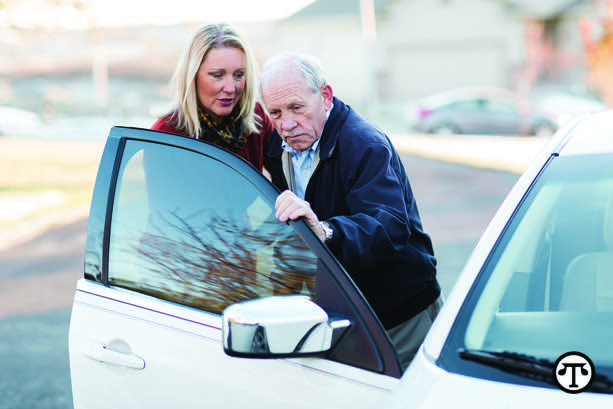
(NAPSI)—Parents don’t hesitate to talk to their teenagers about driving safely, but no one is talking to seniors.
Many older people rely on driving for the independence and freedom to go where they want, when they want. The idea of giving up driving sparks feelings of anger, anxiety and loneliness. Though many drivers can continue to drive safely as they get older, physical and cognitive changes may put older adults in jeopardy on the road.
Developing an objective process to assess a loved one’s driving abilities, communicate concerns, and plan ways to transition driving practices can help take the emotion out of the situation.
To help families start the dialogue, occupational therapist and senior driving expert Elin Schold Davis offers five suggestions.
- Do all you can to keep a safe driver safer. For example, explore the CarFit program, an educational program created by the American Society on Aging and developed with the American Automobile Association, AARP and the American Occupational Therapy Association, available at www.car-fit.org. CarFit is designed to help older drivers find out how well their personal vehicles suit them and highlight actions they can take to improve.
- Get the facts. Any decisions about driving cessation should be based on data, and seniors deserve to have more than just opinions influencing whether or not they can continue to drive. Get the facts with evaluations from medical professionals, such as a physical or vision exam. Encourage your loved one to take a driving self-assessment.
- Listen and communicate. Listen to your loved one’s concerns to help understand and develop a plan with which he or she feels comfortable.
- Create a plan with plenty of alternatives. When you get to the root of an aging adult’s concerns, it’s easier to create a plan that meets his or her needs. For example, if isolation is a concern, look into public transportation or consider friends or family members who are willing to drive.
- Explore new technologies. Assistive technologies, such as emergency response systems, smart headlights, and blind spot warning systems, keep older drivers safer on the road.
A new survey by Home Instead, Inc., franchisor of the Home Instead Senior Care network, found that 95 percent of surveyed seniors have not talked to their loved ones about driving. To see Let’s Talk about Driving resources, including the free Safe Driving Planner, which lets families help seniors assess their driving habits, visit www.LetsTalkAboutDriving.com or call a Home Instead office.
